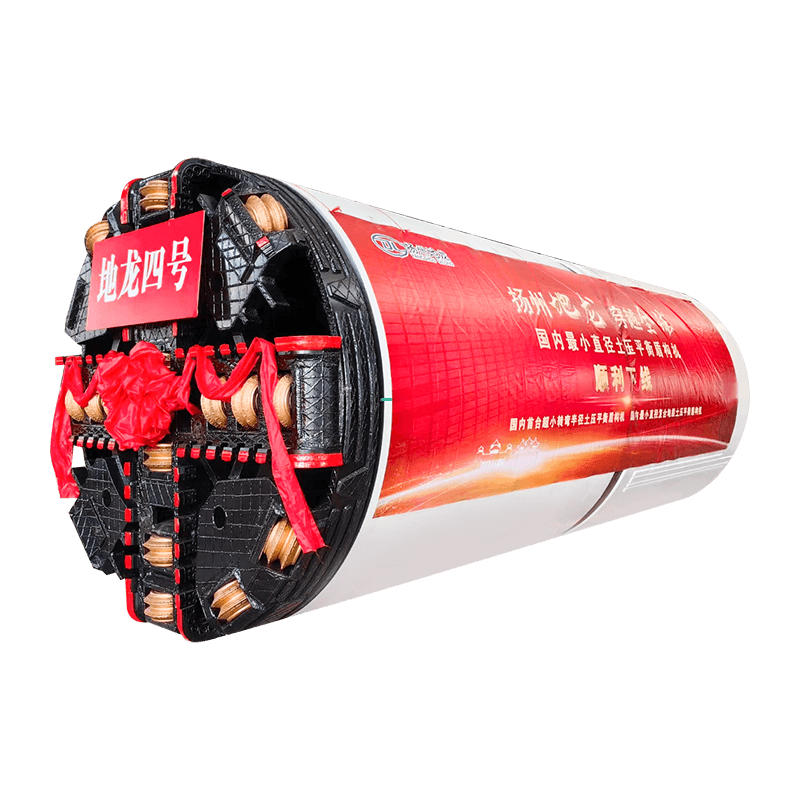The Key Components of a Tunnel Boring Machine
At the heart of any TBM is the cutter head, which is the rotating element responsible for breaking the ground as the machine advances through the earth. This component is equipped with a series of heavy-duty teeth made from high-strength materials such as tungsten carbide, designed to cut through various soil types, including soft clay, sand, and hard rock.
Behind the cutter head is the shield, which protects the machine and workers from the surrounding ground pressure. The shield helps to maintain the structural integrity of the tunnel as excavation progresses. In some cases, the shield is equipped with hydraulic jacks that push the machine forward, maintaining continuous pressure to keep the tunnel walls stable.
The Mechanism of Tunnel Excavation
TBMs use a continuous process to remove excavated material, typically through a system of conveyor belts and scrapers that carry the debris away from the cutter head. The material is then transported to the surface for disposal or recycling. The efficient removal of debris is crucial for maintaining the machine’s progress and ensuring the tunnel remains clear of obstructions.
As the TBM moves forward, the tunnel lining is installed immediately behind the shield. This lining is typically made of concrete segments that fit together to form a continuous, sturdy structure. The lining serves two purposes: it provides structural support to the tunnel and helps prevent ground water or other materials from entering the tunnel.
Advanced Navigation and Control Systems
One of the most impressive aspects of TBM technology is the ability to control the machine with a high degree of precision. TBMs are equipped with sophisticated navigation systems that use a combination of GPS, laser scanning, and inertial measurement units (IMUs) to track the machine's location and ensure it follows the correct alignment.
The operator can monitor the TBM’s progress in real time, adjusting parameters such as the cutter head speed and thrust force to optimize performance. These systems are crucial in ensuring the tunnel remains straight and does not deviate from its planned route, particularly in difficult geological conditions.

Environmental and Safety Features
Given the scale of many TBM projects, ensuring the safety of workers and minimizing environmental impact are top priorities. Modern TBMs are equipped with advanced safety systems such as fire detection and suppression, ventilation, and emergency escape routes. The enclosed environment also reduces exposure to hazardous gases or conditions that might be encountered in open-face tunneling.
Additionally, TBMs help minimize surface disruption. Unlike traditional open-pit excavation, which can cause noise, vibration, and dust, TBMs operate entirely underground, allowing construction to proceed with minimal disruption to the surrounding environment and local communities.
Future Innovations in Tunnel Boring Technology
The technology behind TBMs continues to evolve, with new innovations being introduced to improve performance, safety, and environmental sustainability. Some of the most exciting developments in the industry include:
Autonomous TBMs: Researchers are working on making TBMs fully autonomous, where the machine can make decisions based on real-time data without human intervention. This could further improve efficiency and reduce the risk of human error.
Improved Cutter Head Technology: Advances in material science are leading to stronger, more durable cutter heads, which can dig through harder materials more efficiently, reducing wear and tear on the machine.
Green TBMs: As the construction industry becomes more focused on sustainability, "green" TBMs that minimize energy consumption and use eco-friendly materials are gaining popularity. Some TBMs are now designed to generate their own power through renewable sources, such as solar energy.













 English
English  русский
русский  عربى
عربى 











